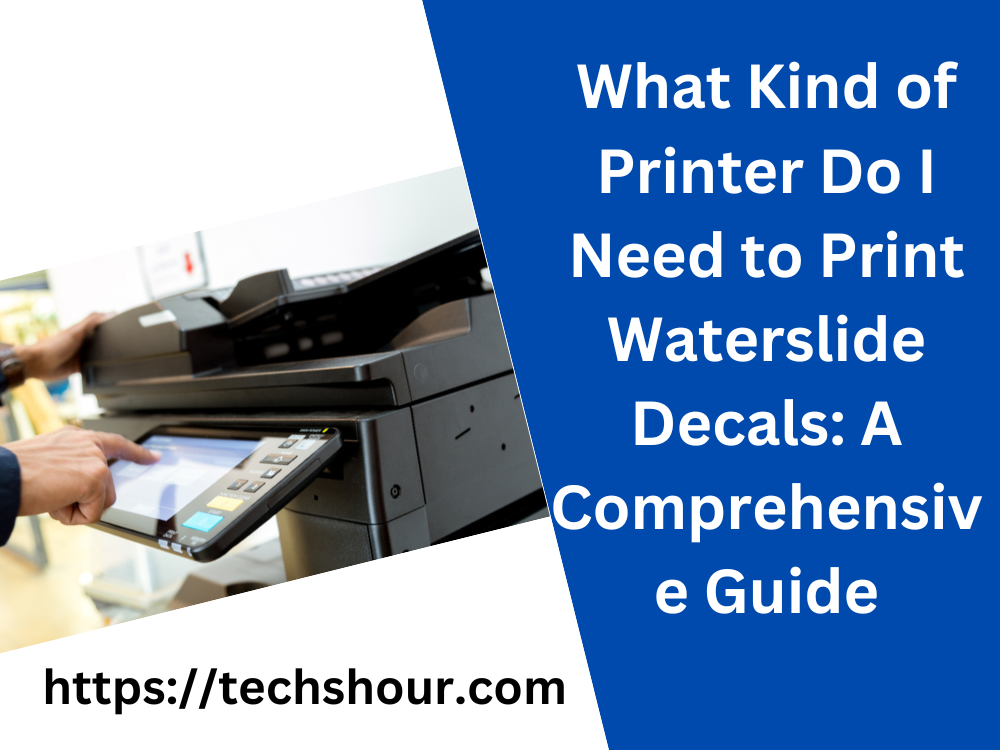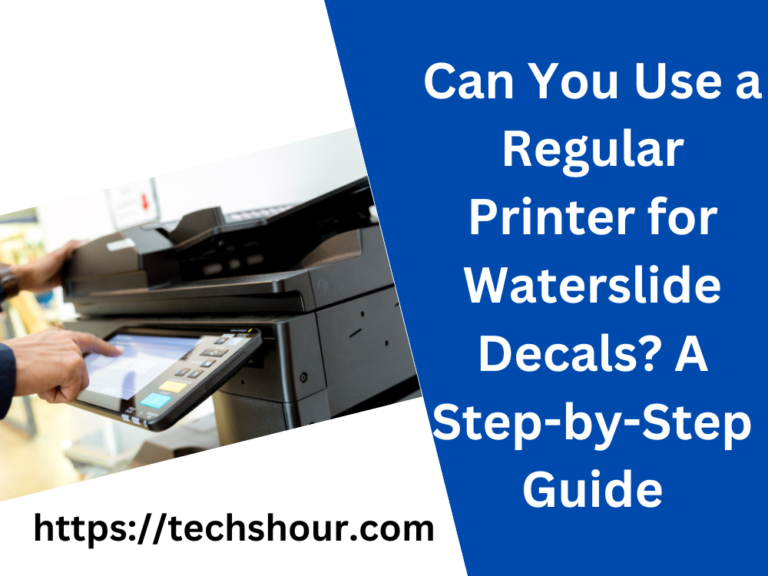What Kind of Printer Do I Need to Print Waterslide Decals: A Comprehensive Guide
Waterslide decals are an excellent way to add intricate designs and patterns to a variety of surfaces, such as ceramics, glass, and even plastic models. But, printing these decals requires a special kind of printer that can handle the unique requirements of these decals. If you’re wondering what kind of printer do you need to print waterslide decals, you’ve come to the right place.
We’ll provide you with a step-by-step guide on how to choose the right printer for your waterslide decal printing needs. From understanding the types of printers available in the market to the key features to look out for, we’ll cover it all.
Table of Contents
What Kind of Printer Do I Need to Print Waterslide Decals: A Comprehensive Guide
Section 1: Understanding Waterslide Decal Printing
Before we dive into the types of printers, let’s first understand what waterslide decals are and how they work. Waterslide decals are thin sheets of transfer paper that can be printed with intricate designs using a special printer. These decals are then soaked in water to remove the backing paper and transfer the design onto the surface.
To print waterslide decals, you’ll need a printer that can handle the delicate paper and ink requirements. The printer should be able to print with high resolution and vibrant colors while also being able to handle the thin and delicate transfer paper.
Section 2: Types of Printers for Waterslide Decal Printing
There are two types of printers that are commonly used for waterslide decal printing: inkjet printers and laser printers.
- Inkjet Printers: Inkjet printers are the most common type of printer used for waterslide decal printing. They work by spraying tiny droplets of ink onto the transfer paper to create the design. Inkjet printers are affordable, versatile, and produce high-quality prints with vibrant colors.
- Laser Printers: Laser printers use a laser to transfer the toner onto the transfer paper to create the design. Laser printers are known for their speed, efficiency, and ability to handle high-volume printing. However, they are not as effective in printing vibrant colors as inkjet printers.
Section 3: Key Features to Look for in a Printer for Waterslide Decal Printing
When choosing a printer for waterslide decal printing, there are several key features that you should look out for. Here are some of the most important features:
- High Resolution: Look for a printer that can print at a high resolution of at least 1200 x 1200 dpi. This will ensure that your designs come out sharp and detailed.
- Wide Color Gamut: Choose a printer that has a wide color gamut to ensure that your designs come out with vibrant and accurate colors.
- Media Handling: Make sure that the printer can handle the delicate and thin transfer paper required for waterslide decals. The printer should also be able to handle various sizes and types of paper.
- Connectivity: Look for a printer that has multiple connectivity options, such as Wi-Fi, USB, and Ethernet. This will allow you to print from multiple devices and locations.
Section 4: Tips and Tricks for Waterslide Decal Printing
Here are some tips and tricks to help you get the best results when printing waterslide decals:
- Use High-Quality Transfer Paper: Always use high-quality transfer paper that is designed specifically for waterslide decal printing. This will ensure that your designs come out crisp and clear.
- Use Genuine Ink Cartridges: Always use genuine ink cartridges that are recommended by the printer manufacturer. This will ensure that your prints come out with accurate colors and avoid damage to your printer.
- Experiment with Different Settings: Play around with different printer settings, such as the paper type, color correction, and ink saturation, to find the best settings for your designs.
- Test Print Before Printing on Actual Surface: Before printing on your actual surface, always do a test print on regular paper to make sure that the design comes out as expected.
- Allow Ink to Dry: After printing, allow the ink to dry completely before soaking the transfer paper in water. This will ensure that the design is transferred onto the surface without smudging.
Frequently Asked Questions
Can I use any printer for waterslide decal printing?
No, you need a printer that can handle the delicate transfer paper and ink requirements of waterslide decals. Inkjet and laser printers are the most commonly used printers for waterslide decal printing.
Can I use regular printer paper for waterslide decal printing?
No, you need to use special transfer paper that is designed specifically for waterslide decal printing.
Do I need to use special ink for waterslide decal printing?
No, you don’t need to use special ink for waterslide decal printing, but it’s recommended to use genuine ink cartridges recommended by the printer manufacturer for the best results.
Conclusion
Printing waterslide decals requires a special kind of printer that can handle the delicate transfer paper and ink requirements. Inkjet and laser printers are the most commonly used printers for waterslide decal printing. When choosing a printer, look for key features such as high resolution, wide color gamut, media handling, and connectivity options.
Remember to always use high-quality transfer paper, genuine ink cartridges, and experiment with different printer settings to get the best results. With this comprehensive guide, you’re now ready to start printing your own custom waterslide decals with ease.
Related Articles:
Best Printer For Waterslide Decals
How to Print Waterslide Decals for Tumblers: A Step-by-Step Guide
How to print waterslide decals with cricut
How to Make Water Slide Decals with an Inkjet Printer
How to Seal Water Slide Decals: A Step-by-Step Guide
How Do You Print Waterslide Nail Decals? A Step-by-Step Guide
Can You Use Any Printer for Waterslide Decals?
Can You Use an Inkjet Printer for Waterslide Decals?
Can You Use a Laser Printer for Waterslide Decals: A Step-by-Step Guide
Can You Use a Regular Printer for Waterslide Decals? A Step-by-Step Guide







